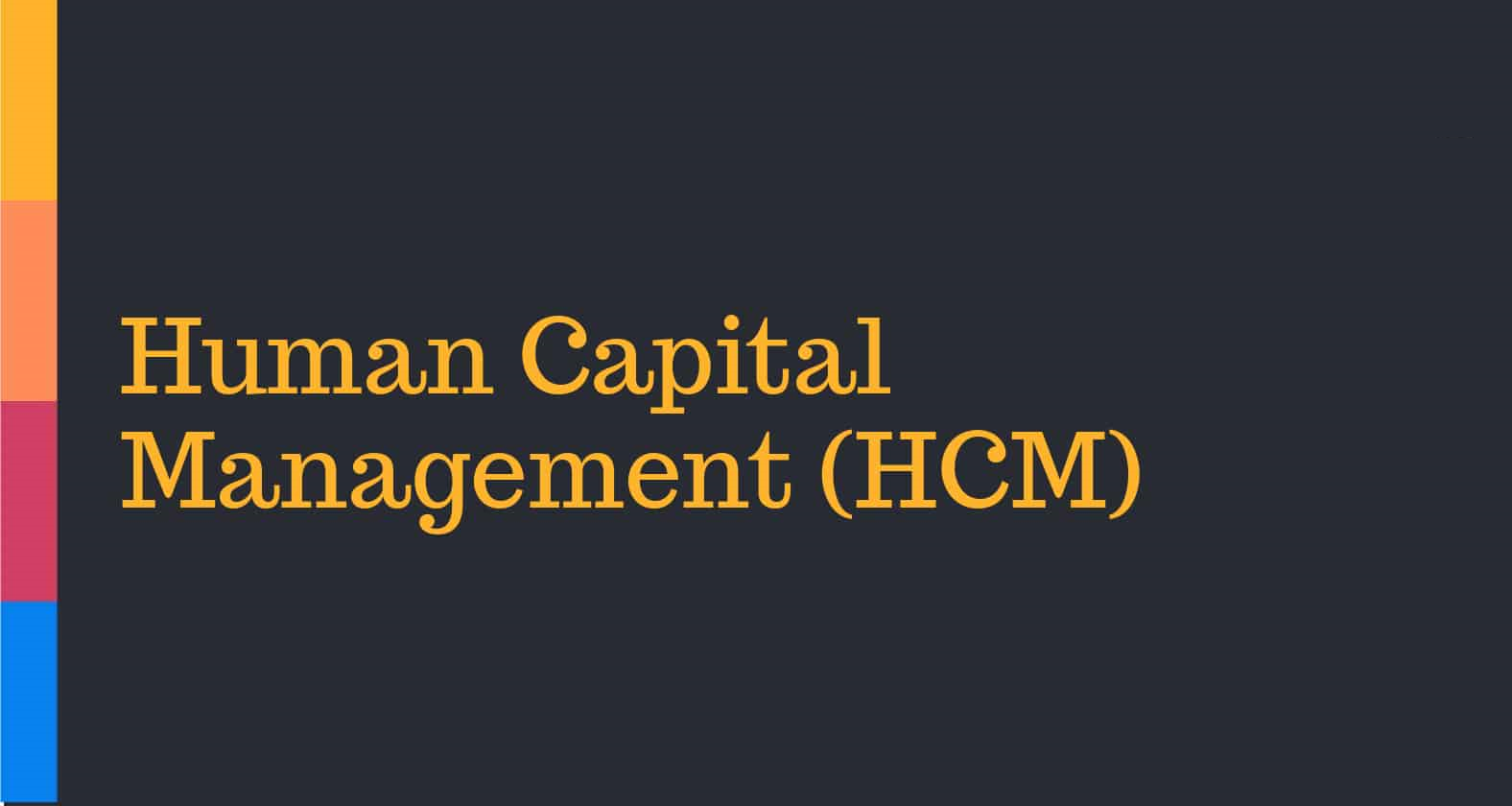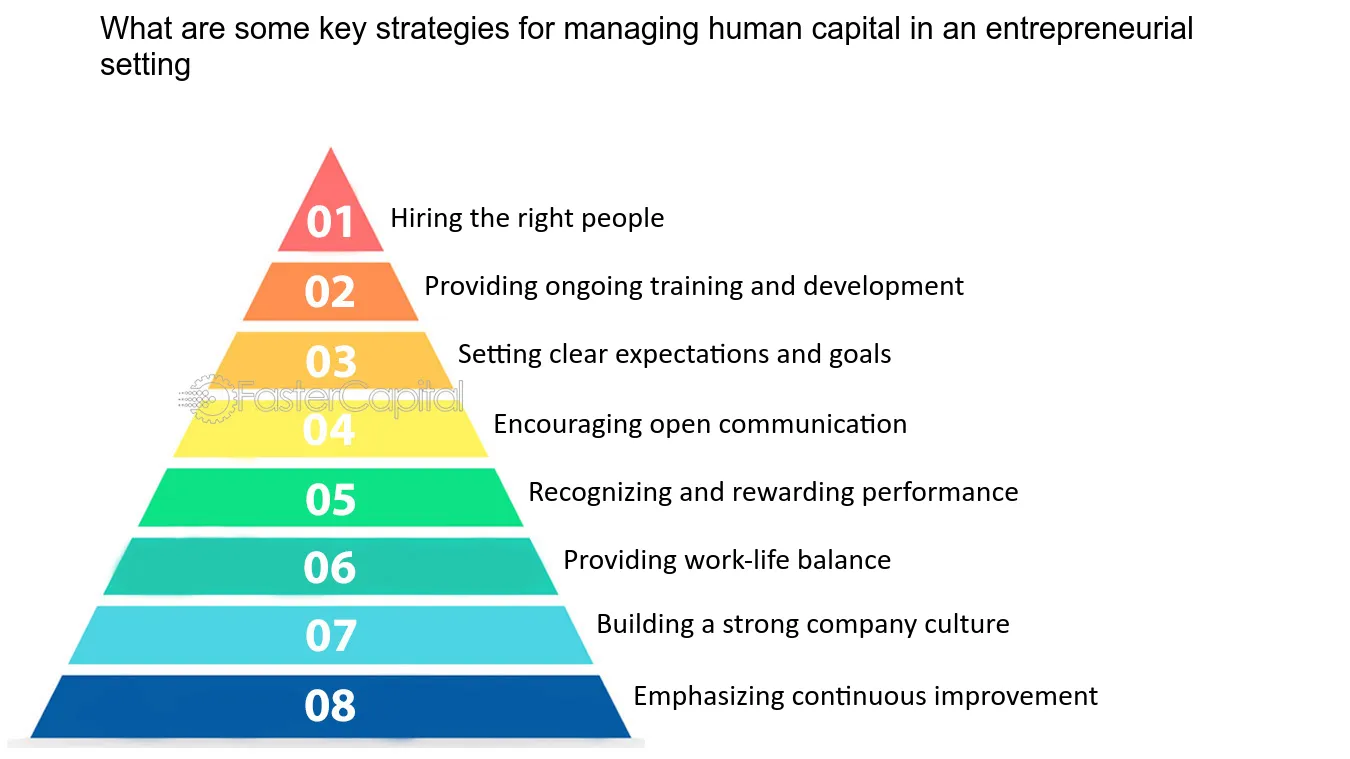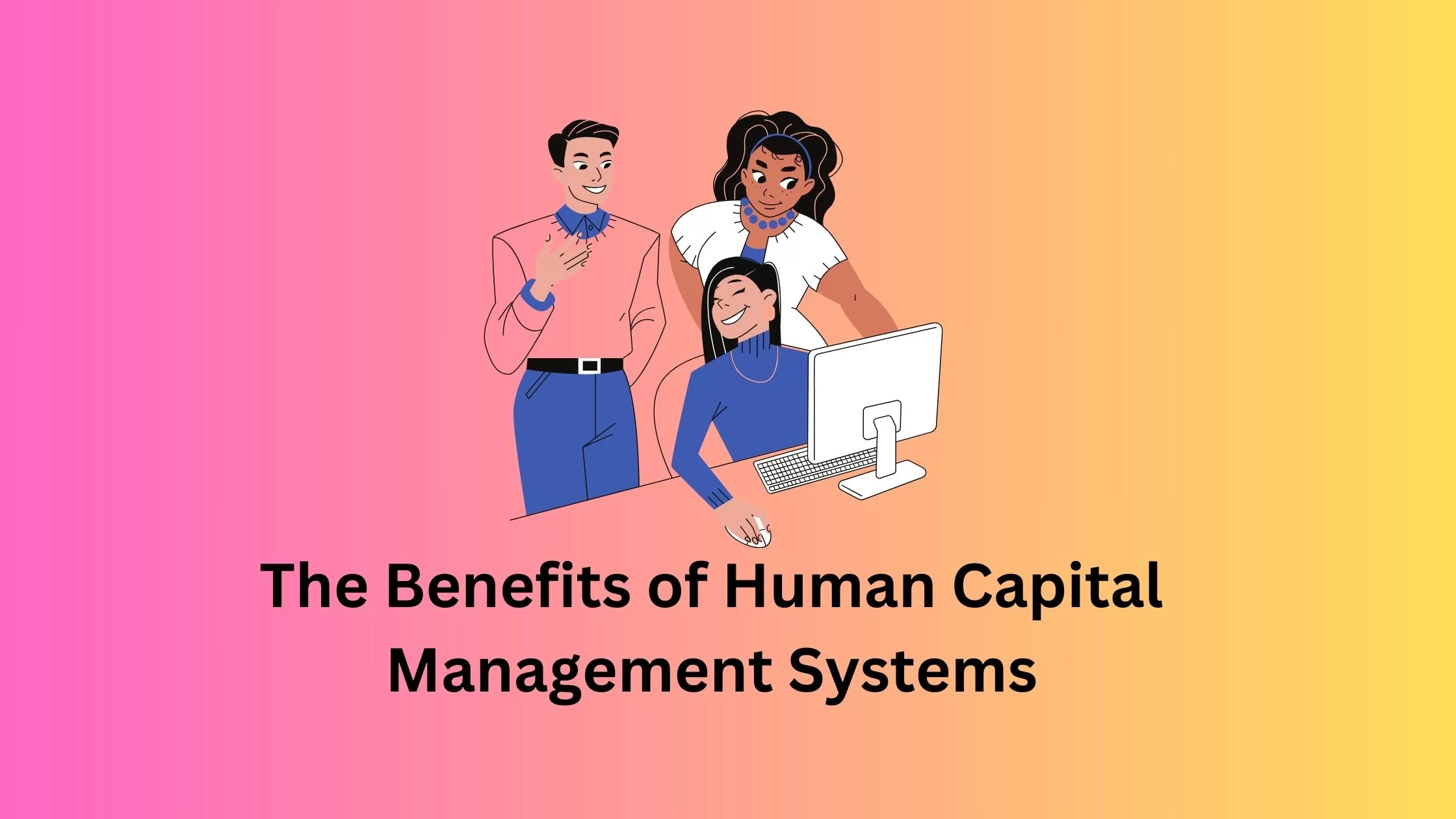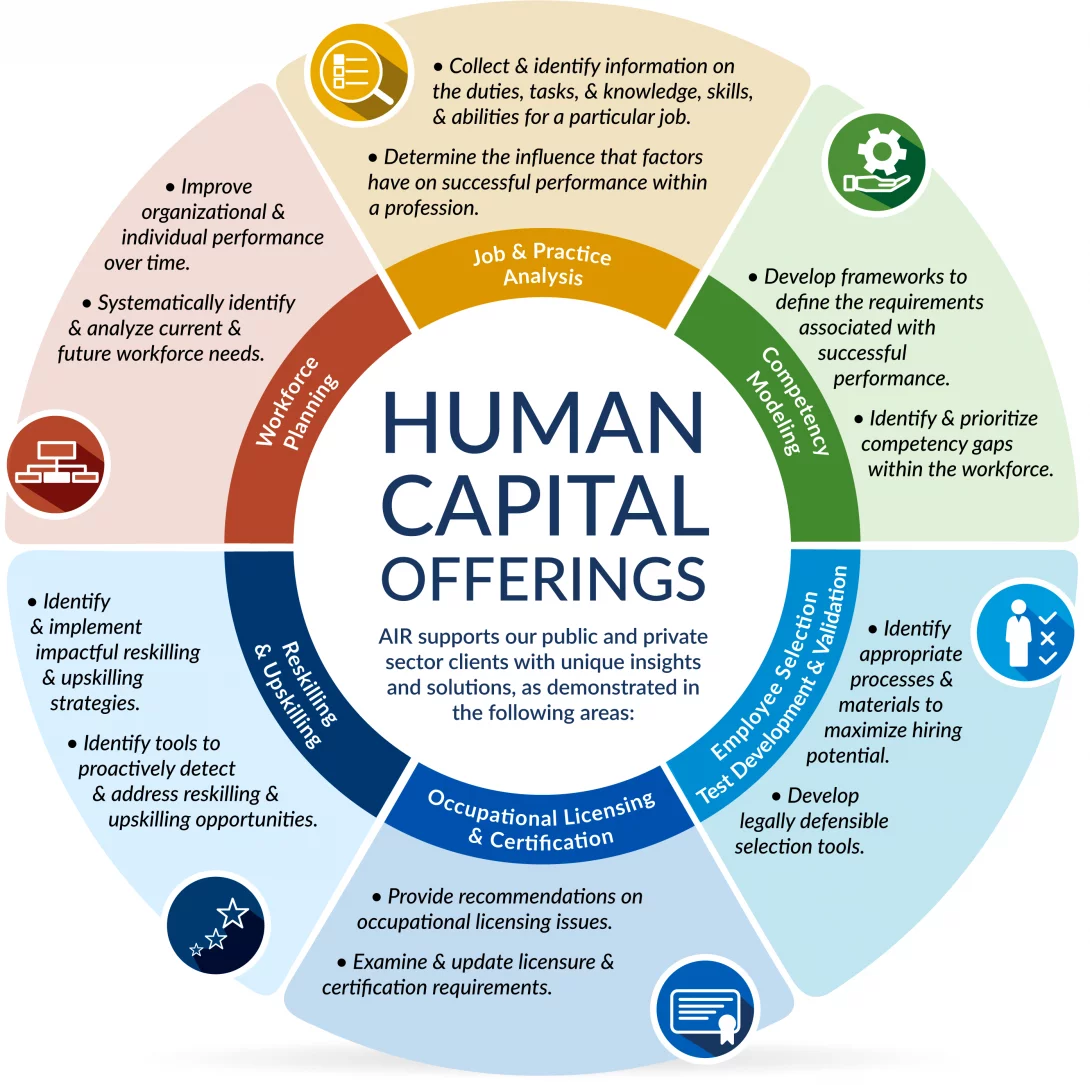
Human Capital Management, what is HCMrepresents the beating heart of organizational success, intertwining human resources with strategic businessobjectives. At its core, HCM encompasses a holistic approach to managing and optimizing the entire employee lifecycle, from recruitment and onboarding to talent development, retention, and offboarding.
In essence, HCM goes beyond traditional HR practices, emphasizing the human element within an organization's structure. By prioritizing talent acquisition, skills enhancement, and employee well-being, HCM enables companies to harness their most valuable asset, their people, as a competitive advantage in today's dynamic businesslandscape.
What Is Human Capital Management(HCM)?
Human Capital Management (HCM) is a broad term that encompasses the strategies and practices organizations use to attract, manage, develop, and retain their workforce. It's about treating employees as valuable assets and investing in their growth and well-being for the benefit of both the individual and the organization.
Here's a breakdown of the key aspects of HCM:
Attraction
- Recruitment - Finding and hiring the best talent for the job, using effective methods like job postings, careerfairs, and employee referrals.
- Onboarding -Smoothing the transition for new hires by providing them with the information, training, and support they need to succeed.
Management
- Payroll and benefits - Administering salaries, benefits, and taxes accurately and efficiently.
- Performance management -Setting goals, providing feedback, and evaluating employee performance to ensure alignment and development.
- Compensation and rewards -Recognizing and rewarding employees for their contributions to motivate and retain them.
- Employee relations - Maintaining positive relationships between employees and management, fostering a healthy work environment.
Development
- Training and learning -Investing in employee training and development programs to improve skills, knowledge, and abilities.
- Career development -Providing opportunities for career advancement and growth within the organization.
Retention
- Engagement and motivation -Creating a positive and engaging work environment that motivates employees to stay with the company.
- Work-life balance -Promoting a healthy work-life balance to reduce stress and burnout and improve employee well-being.
Benefits Of HCM
Here are some of the benefits of effective HCM:
- Increased productivity and performance - Engaged and motivated employees are more productive and deliver better results.
- Reduced costs -Lower employee turnover and absenteeism lead to cost savings.
- Improved employer branding-A positive reputation as an employer attracts top talent.
- Enhanced compliance - HCM systems help ensure compliance with labor laws and regulations.
Insights On Human Capital Management
Here are the 7 essential insights on human capital management:
1. HCM is an investment in the future of the organization - HCM is an investment in the people who power the organization. Organizations that are successful at HCM are committed to investing in their employees' development and growth.
2. HCM is a global function that operates in a complex and interconnected world - HCM is not just about managing employees in one location; it is about managing a global workforce. Organizations that are successful at HCM have global HCM strategies that are aligned with their overall business strategy.
3. HCM is a collaborative effort that involves all stakeholders in the organization - HCM is not just the responsibility of HR; it is a collaborative effort that involves all stakeholders in the organization. Organizations that are successful at HCM have a strong culture of collaboration and communication between HR, managers, and employees.
4. HCM is a continuous process that adapts to the changing needs of the business and the workforce - HCM is not a one-time event; it is an ongoing process that needs to adapt to the changing needs of the business and the workforce. Organizations that are successful at HCM are able to adapt their HCM strategies to meet the challenges of the ever-changing business environment.
5. HCM is data-driven and uses analytics to make informed decisions - HCM is about using data to make informed decisions about people. Organizations that are successful at HCM use data to identify and address workforce trends, develop targeted training programs, and make better decisions about hiring and promotion.
6. HCM is a people-centric approach that focuses on attracting, developing, and retaining top talent - HCM is about investing in people. Organizations that are successful at HCM are able to attract and retain the best talent, which is essential for innovation and growth.
7. HCM is a strategic business function that drives organizational success -HCM is no longer just an HR function; it is a critical enabler of business value. HCM can help organizations achieve their strategic goals by attracting, developing, and retaining top talent, managing workforces effectively, and optimizing productivity.
How To Start Your HCM Career?
Here are the steps on how tostart your HCM career:
1. Educate Yourself About HCM
Before you can start your HCM career, it's important to understand what HCM is and what it involves. There are many resources available to help you learn about HCM, including:
- Articles and blogs
- Books
- Online courses
2. Get Relevant Experience
There are many ways to get relevant experience for an HCM career. Some options include:
- Volunteer your skills.
- Entry-level HR positions -There are many entry-level HR positions available that can help you get your foot in the door of the HCM field.
- Internships -Internships are a great way to get hands-on experience in HCM. There are many internships available at companies of all sizes.
3. Develop Your HCM Skills
There are many skills that are important for an HCM career. Some of the most important skills include:
- Communication -HCM professionals need to be able to communicate effectively with both employees and managers.
- Problem-solving -HCM professionals need to be able to identify and solve problems.
- Organizational skills -HCM professionals need to be able to manage their time effectively and prioritize their tasks.
4. Get Certified
There are many HCM certifications available that can help you demonstrate your expertise to potential employers. Some popular certifications include the PHR, SPHR, and SHRM-CP.
5. Network With HCM Professionals
Networking is important for any career, but it is especially important for an HCM career. There are many ways to network with HCM professionals, such as attending industry events, joining professional organizations, and connecting with people on LinkedIn.
Become Proficient With Human Capital Management Software

Becoming proficient with human capital management (HCM) software requires a combination of theoretical knowledge and practical experience. Here's a step-by-step guide to help you get started:
- Understand the basics of HCM - Before diving into the software, it's crucial to have a solid understanding of HCM concepts and processes. Familiarize yourself with the core HR functions managed by HCM software, such as:
- Recruitment and onboarding -Attracting, selecting, and hiring the right talent, and integrating new employees into the organization.
- Talent management -Developing and retaining top talent through performance management, training and development, and succession planning.
- Compensation and benefits -Administering payroll, benefits programs, and compensation packages.
- Compliance -Ensuring adherence to employment laws and regulations.
- Choose the right HCM software - The HCM software market offers a wide range of solutions, each with its own strengths, features, and pricing. Consider your organization's size, industry, and specific needs when selecting software. Popular HCM software options include Workday, Oracle HCM Cloud, SAP SuccessFactors, and Ceridian Dayforce HCM.
- Attend training or workshop - Many software vendors offer training courses and workshops to help users learn their specific HCM solutions. These sessions provide hands-on experience with the software's features and functionalities, ensuring you can effectively utilize the system.
- Practice using the software - Once you have a basic understanding of the software, start practicing its use. Familiarize yourself with the user interface, navigation, and common tasks. Many HCM software systems offer demo environments or sandbox accounts where you can practice without affecting real data.
- Seek guidance from experienced users - on't hesitate to seek help from experienced HCM software users within your organization or from online communities. Ask questions, share tips, and learn from their experiences to enhance your proficiency.
- Stay up-to-date with software updates - HCM software is constantly evolving with new features and enhancements. Regularly check for software updates and familiarize yourself with any changes to ensure you're using the most up-to-date version.
- Explore advanced functionalities - As you gain proficiency, explore the software's advanced functionalities and reporting capabilities. These tools can provide valuable insights into your workforce data, enabling you to make informed HR decisions.
- Continuously learn and adapt - The HCM landscape is constantly changing, so continuous learning is essential. Stay up-to-date on HR trends, emerging technologies, and legal compliance requirements to maintain your expertise.
How To Choose A Human Capital Management System?
Choosing the right human capital management (HCM) system for your organization is a critical decision that can significantly impact your HR operations and overall business success. Here's a comprehensive guide to help you navigate the selection process:
1. Assess Your Organization's Needs And Goals
Before embarking on your HCM software search, it's crucial to clearly define your organization's unique needs and goals. Identify the specific HR challenges you aim to address, such as streamlining recruitment, improving performance management, or enhancing employee engagement. Consider your organization's size, industry, and growth plans to determine the scope and scale of the HCM solution you require.
2. Evaluate Your Current HR Processes And Data
Take stock of your existing HR processes and data management practices. Identify areas for improvement and potential gaps that an HCM system could address. Assess the quality and accessibility of your employee data, ensuring it's well-organized and centralized for seamless integration with the chosen HCM software.
3. Establish A Selection Team
Assemble a cross-functional team representing various departments, including HR, IT, finance, and operations. This team will collaborate throughout the selection process, providing diverse perspectives and ensuring the chosen HCM solution aligns with the organization's overall goals.
4. Research And Shortlist HCM Vendors
Conduct thorough research on HCM software vendors, considering factors such as their reputation, market share, customer reviews, and industry expertise. Shortlist vendors that align with your organization's size, needs, and budget.
5. Request Demos And Evaluate Vendor Solutions
Schedule demos with shortlisted vendors to gain hands-on experience with their HCM software solutions. Evaluate the software's functionality, user interface, ease of use, and reporting capabilities. Assess how well the software addresses your organization's specific requirements and integrates with your existing IT infrastructure.
6. Consider Integration Capabilities
Ensure the HCM software can seamlessly integrate with your existing HR and business systems, such as payroll, time and attendance, and enterprise resource planning (ERP). This integration will eliminate data silos and streamline HR processes.
7. Evaluate Vendor Support And Service
Assess the level of support and service provided by each vendor. Consider factors such as their response times, training resources, and customer support channels. Ensure the vendor has a proven track record of providing responsive and reliable support.
8. Negotiate Pricing And Terms
Negotiate pricing and terms with the shortlisted vendors, considering factors such as the scope of the implementation, software licensing, ongoing support costs, and renewal terms.
9. Conduct A Pilot Test
Before rolling out the HCM system to the entire organization, conduct a pilot test with a small group of users to identify any potential issues or areas for improvement. This pilot test will provide valuable feedback and ensure a smooth transition to the new system.
10. Implement The HCM System And Provide Training
Develop a comprehensive implementation plan that includes data migration, user training, and change management strategies. Provide adequate training to all employees who will be using the HCM system, ensuring they are comfortable with its functionalities and can effectively utilize its features.
FAQ's About What Is Hcm?
What Is An HCM System?
Human capital management (HCM) is the set of practices an organization uses for recruiting, managing, developing, and optimizing employees to increase their value to the company. Done right, human capital management results in Hiring the right talent. Having all the needed skill sets in the company's workforce.
What Is HCM In HR Terms?
Human capital management (HCM) is a set of practices related to people resource management. These practices are focused on the organizational need to provide specific competencies and are implemented in three categories: workforce acquisition, workforce management, and workforce optimization.
What Is The Difference Between HR And HCM?
While HRM focuses on developing and managing systems and processes that enable employees to effectively perform their jobs, HCM focuses on maximizing employees' economic value to an organization. Put another way, HRM is the foundation and structure of the human resource function that enables HCM to grow and prosper
Conclusion
Human Capital Management (HCM) stands as a pivotal force reshaping the way organizations perceive and engage with their most valuable resource: their employees. This comprehensive approach transcends traditional HR functions, integrating technology, data analytics, and strategic initiatives to optimize every facet of the employee lifecycle.
Embracing HCM isn't just about implementing sophisticated systems; it's about recognizing the intrinsic value of individuals within an organization and aligning their goals with the broader vision. By prioritizing the development and well-being of employees, HCM becomes a catalyst for innovation, agility, and resilience in today's competitive landscape.

